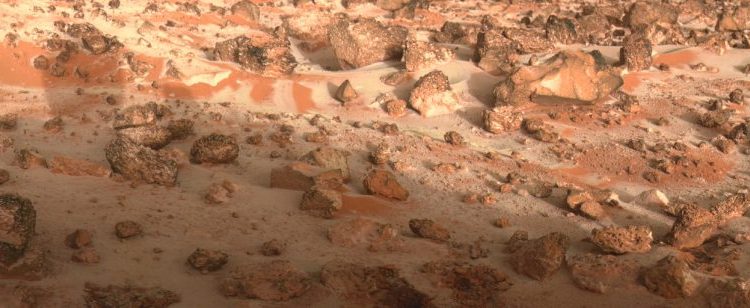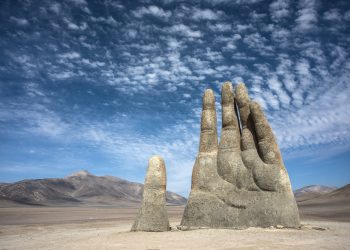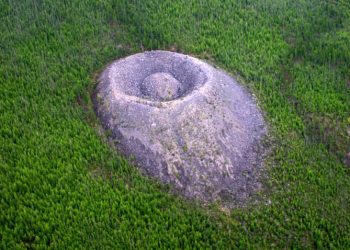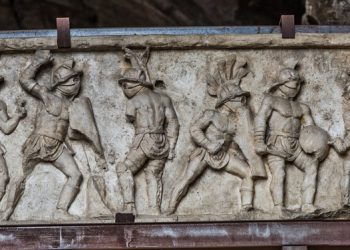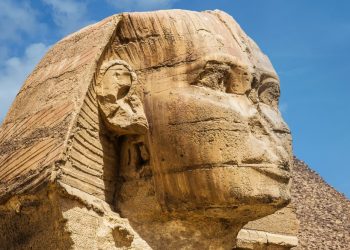The Viking program can be considered the first truly effective one in the global space exploration efforts of Mars.
The spacecraft Viking 1 and Viking 2 consisted of orbital stations that studied the atmosphere of Mars and lander modules, which in 1976 transmitted the first high-quality color photographs from the planet’s surface and performed biological experiments.
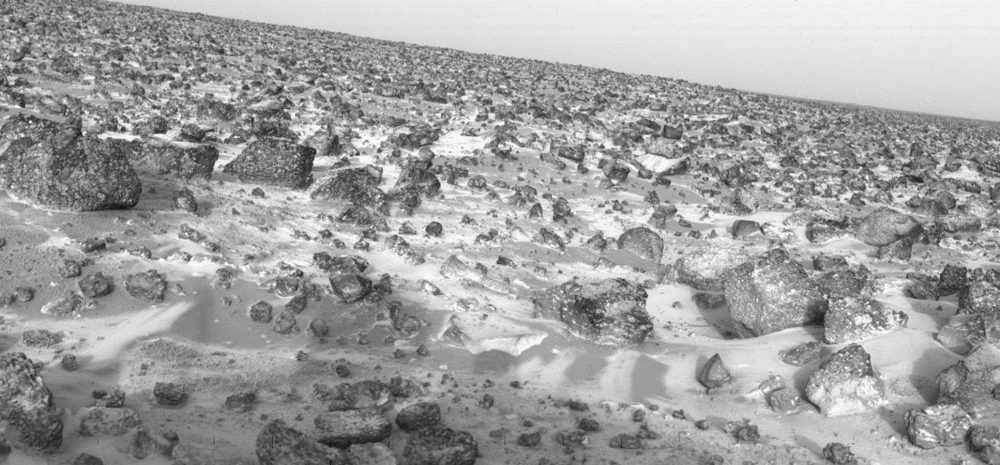
In order to commemorate the successes of the Viking program, we will enjoy several old but not less incredible images of the surface of Mars, taken by the Viking Lander 2. And in the lines in between, we will discuss pretty much everything you need to know about the actual mission.
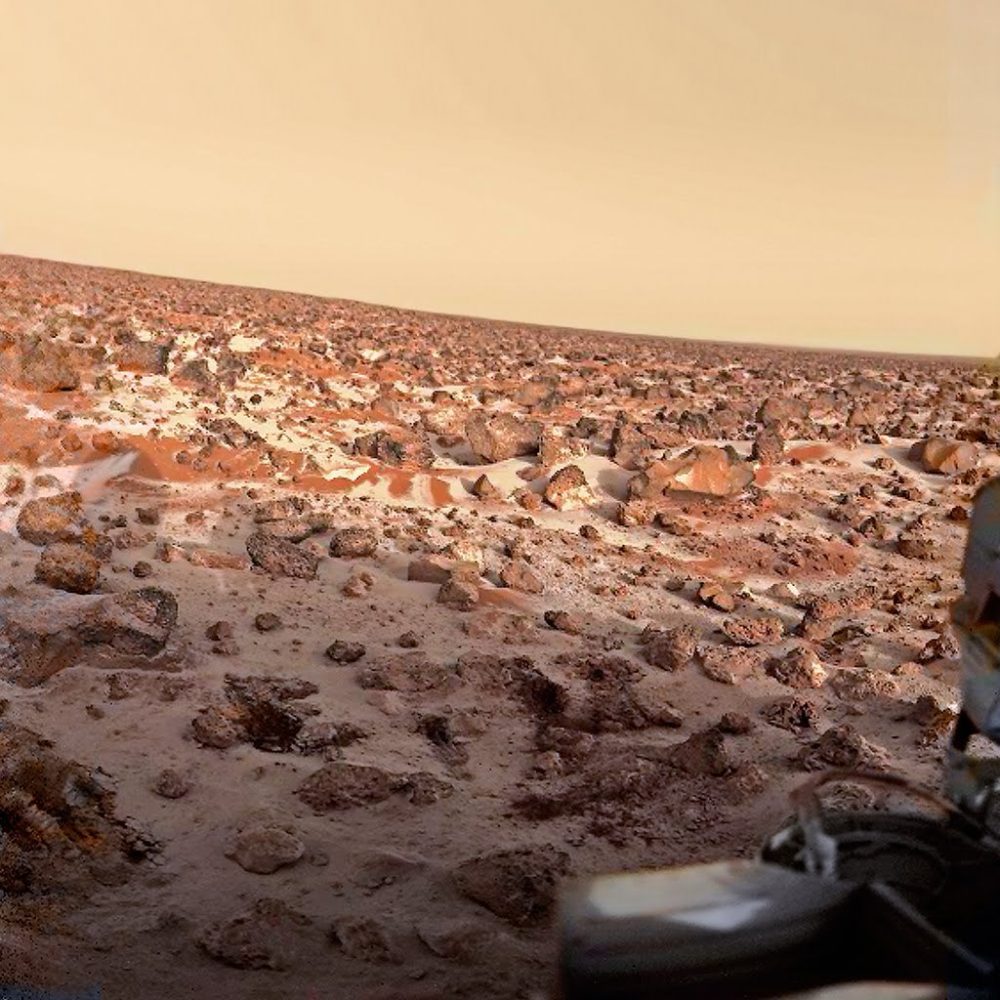
Viking 2 Objectives and Goals
During the Viking 2 space program, two modules were launched: an orbital and a landing module. Viking 2 reached orbit on August 7, 1976, while the landing happened on September 3 the same year. The objectives of the mission were the following:
• Shooting objects from orbit
• Study the atmosphere
• Survey and collection of samples from the surface
Orbiter

Each module of the spacecraft performed different tasks. The orbital module was designed in such a way as to ensure that the descent unit reaches Mars safely. It had to analyze the topography of the planet to determine the best place to land the probe. Its tasks included a lot of independent research, such as:
• Analysis of the planet’s magnetic field
• Measurement of atmospheric pressure
• Temperature measurement
• Photographing the surface

While in orbit, the Viking 2 probe was able to take clear images of the northern polar region of Mars. Over the entire period of operation, the orbital station has made more than 16,000 images, not to mention the data transmitted using the infrared spectrometer and radiometer installed in the Viking 2 probe compartments.
During the research of the Viking 2 AMS, the existence of three types of geostructures on Mars was confirmed:
1. Huge layered deposits completely covered with centuries-old accumulations of polar ice
2. Large fields of desert dunes
3. A flat surface is strewn with impact craters between the first two structures
Viking 2 Lander
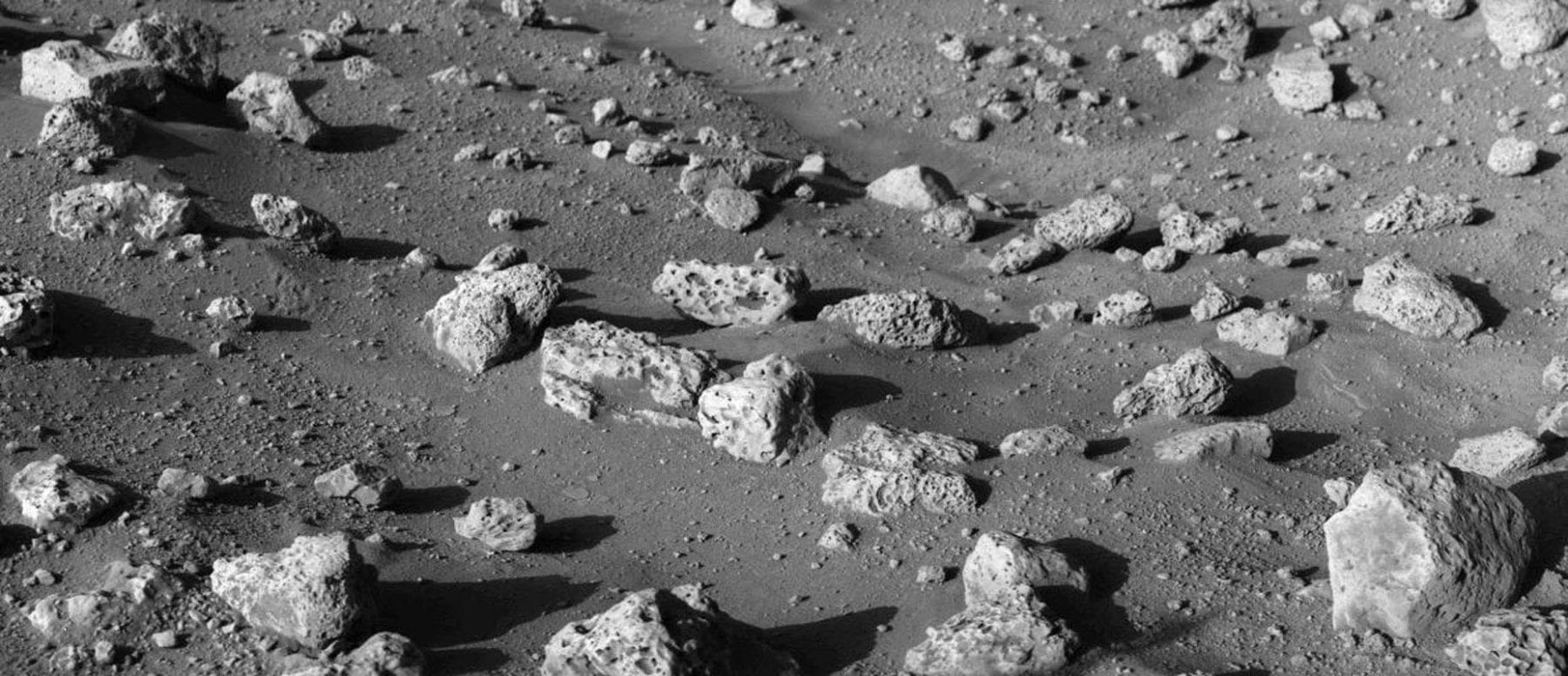
Unlike the orbital module, which used the already known and proven Mariner technology at that time, the lander was developed specifically for the mission. Large-scale research work of one of the modules of the Viking 2 landing apparatus gave scientists a huge amount of information.
As a result of meteorological and seismological studies, scientists were able to conduct an accurate analysis of the properties of the planet’s atmosphere and soil. One of the main achievements was obtaining specific samples, which allowed further analysis of the chemical composition of the surface.
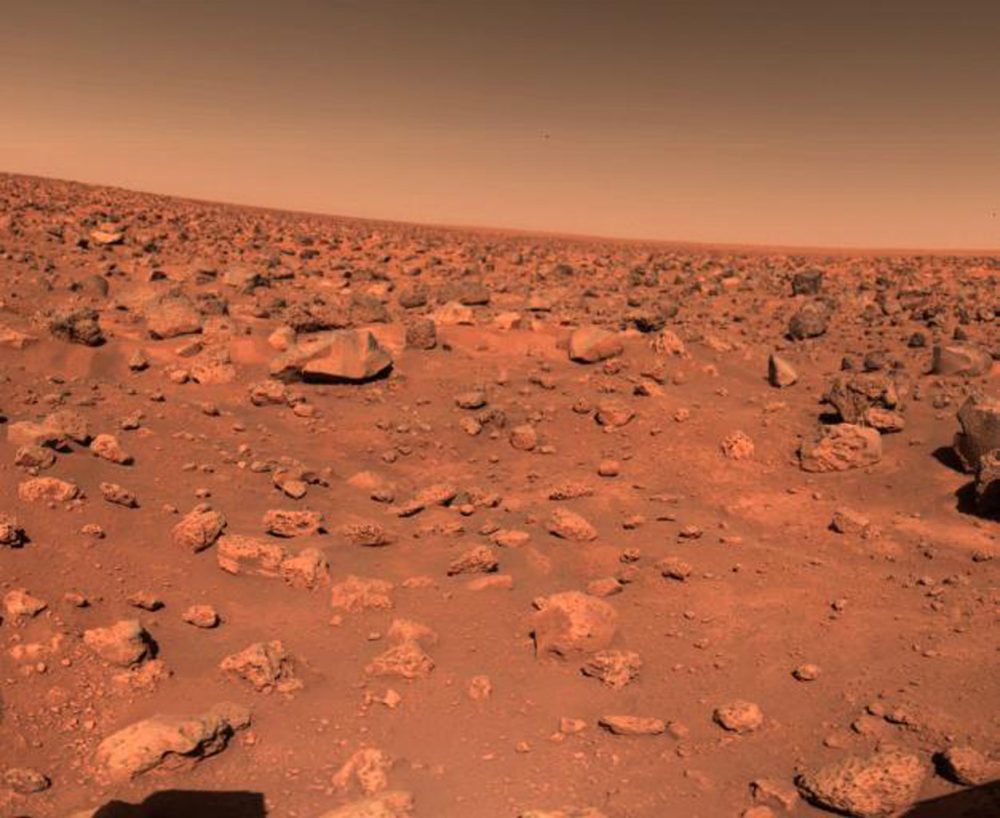
In addition, the goal was to carry out several major research works, while awaiting confirmation of the then widespread hypothesis of the existence of life on Mars.
This included conducting experiments to identify the possibilities of photosynthesis and metabolism here, as well as gas emissions.
The probe had to consistently photograph each stage of its landing. The researchers were interested in photographs of the sun, satellites, atmosphere, surface, etc. And they also needed photographs of the Viking 2 itself, confirming a successful landing.
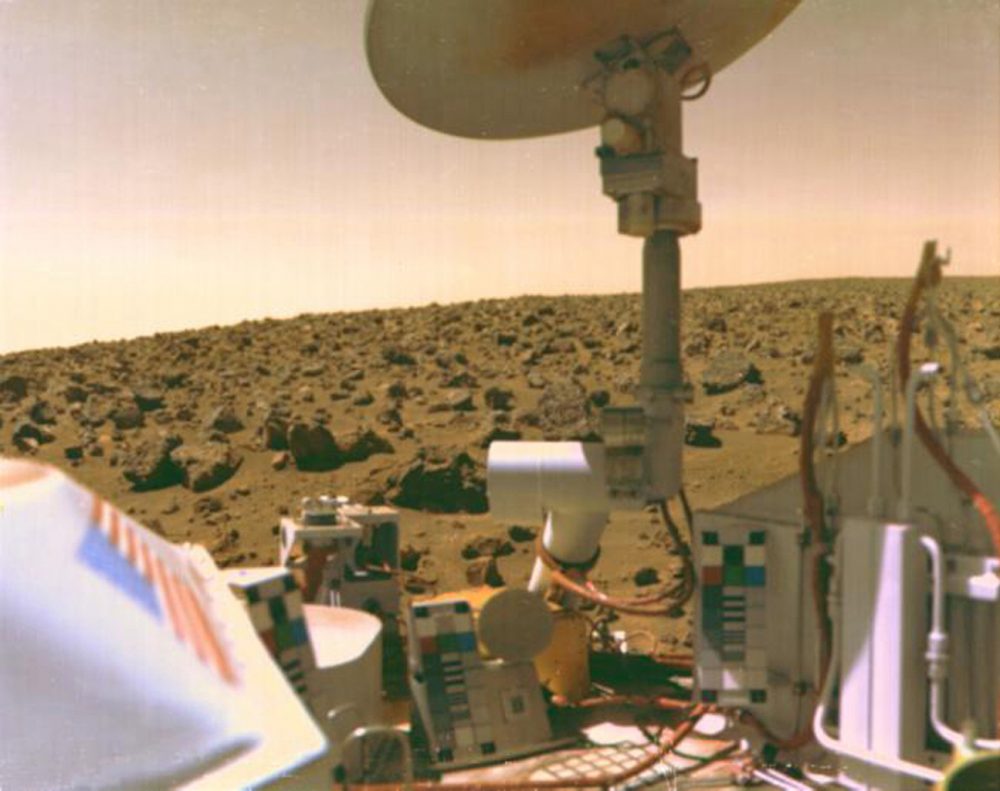
Here are some simple lander vehicle characteristics that will give you a better idea of what it included:
• The Viking 2 lander was 2.1 meters high while the transverse dimension was 6 meters
• The total weight of the rover station was 1199 kilograms
• It was powered by three hydrazine-fueled engines
• Its energy source was radioisotope electric Thermo generators (RTGs), providing a power of 30 W and a voltage of 4.4 V
Now that we know the characteristics, here is the scientific equipment installed for research work on the Viking 2 lander:
• Two high-resolution photo and television installations
• Set of meteorological equipment
• Seismograph
• A device for analyzing oxidative activity
• Alpha proton and x-ray spectrometer
• Chromatography-mass spectrometer
• Soil intake
Landing Place

On September 3, 1976, the Viking 2 lander was successfully landed on the Utopia Plain. The images of the initially selected primary and backup landing points showed that the terrain was not even enough and could cause an accident. Therefore, within a few weeks, a new point was chosen for the landing in the eastern half of the northern hemisphere, which turned out to be the Utopia Planitia Plain.
Completing the mission

Although the maximum duration of the expedition to Mars of Viking 2 was supposed to be three months, in practice it lasted several years. Both units worked for significantly longer than originally calculated.
Finally, the orbital module shut down on June 25, 1978, after a leak appeared in the fuel tank to orient the flight altitude in space. The lander continued to operate for another 2 years until battery failure forced its shut down.
The initial goal of the expedition was to provide strong evidence of the existence of organic life on the red planet. Of course, the final results completely refuted this theory.
The conclusion was unambiguous: there are no traces of the existence of life on Mars.
The Future of Mars Exploration

Now, 40 years after the Viking 1 and 2 missions, life on Mars has not yet been found but we know a great deal about the planet thanks to successful programs like the Viking one.
I believe that the future is bright and we will soon know so much more about the Red Planet, once the latest missions sent in 2020 land. Of course, there is never any guarantee that any landing on the surface of Mars will be successful but this is a topic for another time.
We can only look forward to 2021 and the years to come as Mars will constantly be present in the latest news and who knows what will be discovered.
Join the discussion and participate in awesome giveaways in our mobile Telegram group. Join Curiosmos on Telegram Today. t.me/Curiosmos
Sources:
• Burke, J. (2014). Viking Lander 2.
• The Viking Mars Mission – The Viking Mars Missions Education and Preservation Project – Google Arts & Culture. (n.d.).
• Williams, D. R. (n.d.). Viking Project Information.



